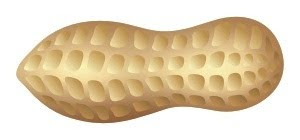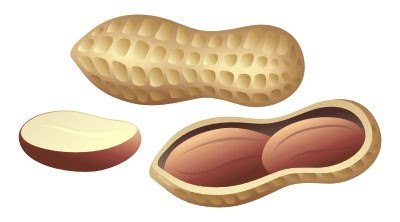More sweets! And there's a whole lot of them this time. But don't panic, we're gonna survive this attack just as easily as the previous one, if we stay put and don't get distracted by all those sweetie-pretty wrappings.
But why the royal revenge, you might ask. When describing the epic events of the first
Sweet Attack, I mentioned that I had received two identical chocolate orders simultaneously, but from different customers, and I started working on the second one right after finishing the first. The brand name for this second series of chocolates is Samepo, which is Georgian for Royal. As for the revenge, these two brands -- BEST and Samepo -- are competing with each other, so my task was to beat my own design, as required by the second customer, who tempted me with gold and silver. The money was good, and you surely remember my three wives and eleven children (the recurring characters from the previous episodes of my design soap). So I tried my BEST to beat the BEST chocolates (sorry for the pun, I just can't restrain myself).
The key product in this series was a classic tiled chocolate with hazelnuts. I call it "tiled" to distinguish it from the bar-shaped chocolate -- I still can't get over the fact that in English there is no distinction between the Mars-type bar ("батончик" in Russian) and the flat, tiled chocolate ("плитка" in Russian). Did I mention I have a thing for contrastive linguistics? Well, now you know it...
Back to the subject. My primary task here was to make the design as different from the previous one as possible, while retaining the classic looks the both products shared. So, for starters,

I gave it a horizontal orientation as opposed to its counterpart's vertical one, seen in the example on the right. Also, I chose a pitch-black background for the area with the brand name, while spotlighting the product representing graphics as vividly as possible, to direct all the attention to the content. On top of that, I designed the digital chocolates and hazelnuts from the scratch, trying to make them look different from the ones used in the previous work. But it wasn't entirely possible, because they shared the same digital technique and came from the same
FruitLab.
Still, I think I was able to achieve that goal through the overall representation. While it definitely shows that the two designs come from the same author (you can't completely escape that and that's normal), the difference is quite enough to safely put them together on the shelf, so to speak.

One thing I particularly liked about this order was that, unlike the previous clients, the "Royal manufacturers" didn't try to give their goods the "outlandish" looks -- all the inscriptions were in Georgian, proudly emphasizing the origin of the product.
The next in the series were the two smaller "tiles" (50 grams each) under the sub-brand Kalakuri, which is a popular word used for naming various products, from sausages to vodkas, and its literal meaning ("urban" or "of the town/city") often has little or no connection to the actual product. In this case, it was simply used to distinguish the "weight class" and make the reference easier.
One of these smaller chocolates had the same hazelnuts inside, so basically I just placed the existing graphics into a modified environment. The other one came with raisins, so I had to spend some more time in the above-mentioned FruitLab. I had never dealt with raisins before, so it was fun making them (although they didn't come out quite as convincing as I planned).


There was yet another pair of tiled chocolates, even smaller (only 20 grams). One was called "Coffee Chocolate" (only I was unable to find any coffee in its ingredients) and the other was named "For Kids" (basically meaning there was no cognac or other "grown-up" stuff inside it).


Right in the middle of this chocolate invasion I received another "sweet" order -- this time from an old customer of mine, who had switched from making soft drinks to baking cakes, to my great surprise (and I suspect to his own as well). But that's not all. Coincidentally, his brand also uses the word "royal" -- it's called Nugbari Samepo, meaning "Royal Delicacies" or something like that. As for the order itself, basically it was a box design, but I only needed to make the front and side stickers for it. The contents of the box would vary, so I decided to use a photo of the assorted products in its design.

Funny thing is, I had no camera at the moment, so I had to make the product shot with my N73. This phone has quite a decent built-in camera which has saved my ass many times before. After some editing and tuning the sweets and cakes started to look quite inviting. Below you can see the actual box prototype:

After this "royal interlude" I continued with my chocolate drama. The customers decided to deal the final blow to the enemy with a series of chocolate bars with fruit fillings, six in total. I already had quite a stock in my FruitLab, but I still lacked some specimens, like cherries and apricots, so I had to design them from the scratch. Also, I needed to come up with some idea for the cocoa filling (we had one on the menu). For that I made a modified version of the "caramel ripple" effect which I had used in their competitors' dark chocolate design.






I seriously doubt the other party will ever get on their feet after this carpet-bombing. But if they still do, I'll be glad to switch sides in this "chocolate war" and beat my own design... once again.
 The artwork perfectly represents my own mood at the moment: I'm planning to move to Lithuania next month, to finally reunite with Diana and settle down our nomadic marriage. No more suitcases and airports please! Thank you.
The artwork perfectly represents my own mood at the moment: I'm planning to move to Lithuania next month, to finally reunite with Diana and settle down our nomadic marriage. No more suitcases and airports please! Thank you.






























































